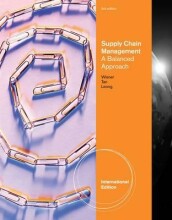Summary: Articles Distribution Management
- This + 400k other summaries
- A unique study and practice tool
- Never study anything twice again
- Get the grades you hope for
- 100% sure, 100% understanding
Read the summary and the most important questions on Articles distribution management
-
1 Bell, D. R., Gallino, S., & Moreno, A. (2014). How to win in an omnichannel world. MIT Sloan
-
What are the four quadrants?
- Traditional retail
- Shopping and delivery hybrid
- Online retail plus showrooms
- Pure play e-commerce
-
3 Chopra, S. (2003). Designing the distribution network in a supply chain. Transportation
This is a preview. There are 10 more flashcards available for chapter 3
Show more cards here -
Based on the choices for the two decisions, there are six distinct distribution network designs that are classified as follows:
- Manufacturer storage with direct shipping
- Manufacturer storage with direct shipping and in-transit merge
- Distributor storage with carrier delivery
- Distributor storage with last mile delivery
- Manufacturer or distributor storage with customer pickup
- Retail storage with customer pickup
-
What are the advantages of manufacturer storage with direct shipping
- Centralizing inventories -> high level of stock availability
- it offers the availability to postpone customization
- Saves on fixes storage facilities costs and savings on handling costs
- High level of product variety is available
-
What are the disadvantages of manufacturer storage with direct shipping
1. high transportation costs
2. response time tends to be large
3. requires significant investment in information infrastructure
4. order tracking becomes hard to implement because it required complete integration of information systems -
What are the advantages of in-transit merge?
1. lower transportation costs
2. improved customer experience -
What is the major disadvantage of in-transit merge?
1. Additional effort during the merge itself. -
4 DuBois, F. L., Toyne, B., & Oliff, M. D. (1993). International manufacturing strategies of US
This is a preview. There are 9 more flashcards available for chapter 4
Show more cards here -
What are the elements of the model of DuBois?
- Firm specific characteristics
- Environmental variables
- Industry structure & characteristics
- Manufacturing strategy
- Manufacturing configuration options
-
6 Fujita, M. (2010). The evolution of spatial economics: from Thünen to the new economic
This is a preview. There are 7 more flashcards available for chapter 6
Show more cards here -
What is relationship between spatial economics and physical distribution?
It is through location that goods and services are made available to potential customers -
What is a location model?
Aims to explain the geographical distribution of all agents in a given location space, together with the associated spatial price and trade pattern.
- long history
- Periphery of economic science
- Still no unified micro-economic framework -
What was the conclusion of Van Thunen
How will land be allocated if there is free competition among farmers and landowners with each individual acting according to his perceived self-interest
Why is there agglomeration of manufacturing activities, in particular in large towns?
- Higher grades + faster learning
- Never study anything twice
- 100% sure, 100% understanding
Topics related to Summary: Articles Distribution Management
-
Porter, M. E. (1998). Clusters and the new economics of competition. Harvard Business
-
Rouwenhorst, B., Reuter, B., Stockrahm, V., van Houtum, G. J., Mantel, R. J., & Zijm, W. H
-
Tang, C., & Tomlin, B. (2008). The power of flexibility for mitigating supply chain
-
Vereecke, A., & Van Dierdonck, R. (2002). The strategic role of the plant: testing Ferdows’s
































